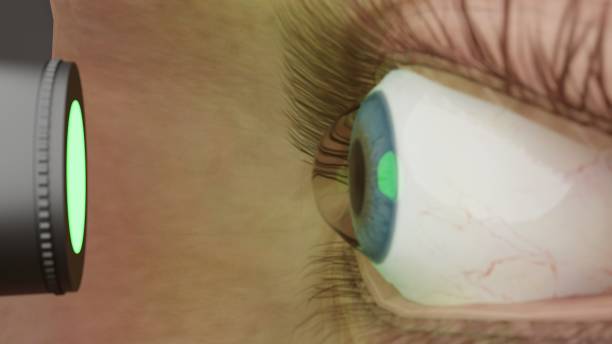
Scleral Lens Blog

Modern genetic testing is truly incredible. Today, we can screen for genetic diseases and begin treatment much earlier than in the past, allowing many potentially affected individuals the chance to enjoy a higher quality of life.
One of the leading corneal genetic disorders today is keratoconus, a condition that impacts millions of Americans every year. This is a condition in which the cornea bulges outward into a cone shape. According to the Cornea Research Foundation of America, keratoconus affects 54.5 per 100,000 people. A person with keratoconus may experience a number of vision related issues including but not limited to:
- Blurry or Cloudy Vision
- Light Sensitivity
- Double Vision
What Does AvaGen Genetic Testing Screen for Exactly?
AvaGen Genetic Testing looks at over 75 genes and 2,000 variants. It is designed to put the risk of keratoconus and other corneal disorders into perspective based on actual data. One of the best parts about this type of testing is that It’s personalized which means that it focuses on your unique genetics.


Ortho-K lenses (short for orthokeratology) lenses are special gas-permeable lenses designed to reshape the cornea. The patient wears the lenses overnight and when they remove them in the morning, they will be able to enjoy clear vision throughout the day without using glasses or daytime contact lenses.
Ortho-K lenses can correct a variety of eye conditions including astigmatism, myopia, and hyperopia. Here are seven things you may not have known about corneal reshaping and Ortho-K lenses.

Keratoconus is a degenerative eye disease that causes the cornea (the front part of the eye) to thin and warp out of shape. Without treatment, the condition can result in vision loss. While the exact cause of keratoconus is unknown, many cases are clearly inherited. This means that if you have a family member with keratoconus, you may be more likely to develop the condition yourself.
If you’re considering having children, genetic testing can be a helpful way to find out if you have a genetic variant that could cause keratoconus. If you do have a specific genetic mutation, there’s a 50% chance that you could pass it on to your child.
If you or your child has keratoconus, custom-fit scleral lenses can dramatically improve visual acuity and comfort levels. To learn more or to find out whether you're a candidate, contact us today!

Switching from glasses to scleral contact lenses can take some time and adjustment. Scleral lenses are larger than traditional contact lenses and are designed to correct more severe vision problems, such as keratoconus and severe dry eye. Unlike traditional contact lenses, scleral lenses are filled with a solution before being placed on the eye, which can take some getting used to.
It's not uncommon for it to take a few weeks to adjust to scleral lenses, as the larger size and filling solution can feel foreign to the eye at first. The eye doctor will provide instructions on how to properly insert, remove, and care for the lenses, as well as how to monitor for any potential complications.

Scleral Lenses Provide More Comfort
Our patients report comfort as the most prominent feature of the scleral lens. Throughout the fitting process, we survey our patients on how the lenses feel, and not surprisingly, the usual response we get is “fine” or “I can’t feel them at all”.
The size of a scleral lens is one of the reasons it is more comfortable than a traditional gas permeable contact lens. A traditional contact lens is much smaller, typically 9 -10 mm in diameter. With each blink, this contact lens moves a bit over the cornea and the lid tends to roll over the edge of the lens as well. Many patients report being unable to wear them for more than a few hours at a time due to discomfort.
The scleral lens, on the other hand, is larger in diameter and spreads its weight over a much greater, less sensitive area so that when you blink, the eyelid doesn’t catch the edge of the lens. Moreover, because the lens vaults over the bulging cornea, it protects the cornea from any abrasion caused by blinking or external irritants. Furthermore, the scleral lens is made up of highly oxygen permeable materials and provides a soothing bath of artificial tears that refresh the ocular surface.
Scleral Lenses Offer Improved Vision
Patients with keratoconus have a clearer vision with scleral lenses than with glasses. With glasses, patients usually see 20/200, whereas with scleral lenses their vision typically improves to 20/30 or even 20/20. Furthermore, because the lenses sit firmly on the eye, they offer more stable vision than traditional lenses. The scleral lens not only offers comfort but also improves vision acuity.

If you have been diagnosed with keratoconus, you may be aware that traditional soft contact lenses are no longer the best option for you. That’s because the irregular shape of the cornea in people with keratoconus can make it difficult or impossible to achieve an optimal fit with regular soft lenses. The good news is that there are other options – particularly scleral contact lenses. These rigid gas-permeable lenses are larger than traditional lenses and have a unique shape that allows them to fit comfortably over irregular corneas. Here are seven reasons your eye doctor might recommend scleral contact lenses for you.
